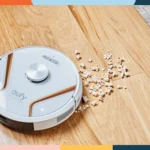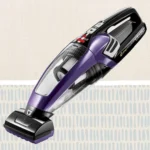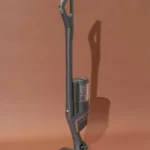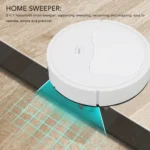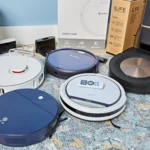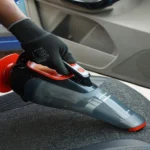We live in a world where keeping our surroundings clean is more essential than ever. With the advent of modern cleaning tools, one such tool that has become ubiquitous is the Handheld Vacuum Cleaner. A revolutionary invention that has come a long way since its inception. Have you ever wondered how we got here? What was the beginning, and how this invention has evolved to become an essential household item? In this article, we’ll take a journey from the early vacuum cleaners to the modern, high-tech handheld vacuum cleaners. Let’s delve into the history of handheld vacuum cleaners and see how it has transformed over time.
The First Vacuum Cleaners
In the early days of cleaning, household chores were laborious and time-consuming. Before the invention of the first vacuum cleaners, cleaning floors meant sweeping and scrubbing daily. The introduction of the first vacuum cleaners revolutionized cleaning, making it easier and more efficient. It wasn’t until later that handheld vacuums were invented, adding yet another layer of convenience to cleaning. Let’s delve deeper into the fascinating history of vacuum cleaners and how they evolved over time.
The Invention of Handheld Vacuums
The invention of handheld vacuums revolutionized the way people cleaned their homes. Before their creation, vacuum cleaners were large and bulky and often required two people just to move them. The creation of handheld vacuums allowed for a much more convenient cleaning experience for the average person.
One of the earliest patents for a handheld vacuum was filed by David T. Kenney in 1905. The invention consisted of a plunger with a rubber nozzle that was used to suck up dust and dirt. While the device was handheld, it was still manual in nature and required physical exertion from the user.
However, it wasn’t until the mid-20th century that handheld vacuums really started to gain popularity. In 1946, Black & Decker released the first handheld vacuum with a motor, called the Dustbuster. The Dustbuster was rechargeable and allowed for quick spot-cleaning without needing to haul out the full-sized vacuum. This invention was a game-changer for busy households.
Another early handheld vacuum was the Royal Prince. It was created in 1952 and was one of the first cordless handheld vacuums. It was lightweight and easy to maneuver, but had limited battery life.
As technology continued to advance, so did the handheld vacuum. In the late 1970s, the first handheld vacuum with a built-in filtration system was created. This allowed for more efficient cleaning, as it prevented dust and dirt from being released back into the air. By the 1980s, handheld vacuums had become even more powerful and versatile, with models capable of cleaning up both wet and dry messes.
Today, there are many different types of handheld vacuums on the market with a wide range of features and capabilities. Some are designed specifically for pet hair, while others are made for use in cars. There are even handheld vacuums that can clean up wet spills. With so many options available, it is important to consider your specific needs when choosing a handheld vacuum. Reading a buying guide or reviews, such as those found at /handheld-vacuum-buying-guide/ or /top-10-handheld-vacuums-small-spaces/, can be helpful in making a decision.
Although they have come a long way since their early days, handheld vacuums are still evolving. In the future, we can expect to see improved battery life, automatic emptying and cleaning, and even robotic handheld vacuums capable of navigating and cleaning a space on their own. For now, however, there are plenty of great handheld vacuums available for purchase, and with regular cleaning and maintenance, they can last for many years. To learn more about how to clean and maintain your handheld vacuum, check out /clean-maintain-handheld-vacuum/.
Early 20th Century Advancements
During the early 20th century, technological advancements paved the way for the development and improvement of handheld vacuums. One of the most notable improvements was the introduction of electric motors into vacuum cleaners, which allowed for more powerful suction and greater mobility compared to manual pump vacuums.
1. Electric Motors
The first electrically-powered vacuum cleaner was invented by Hubert Cecil Booth in 1901, which marked a significant advancement in technology that contributed to the creation of lightweight and handheld vacuums. The technology of electric motors greatly improved the performance and efficiency of these small vacuums, making them much more effective in cleaning various surfaces.
2. Compact and Portable
As the demand for handheld vacuums grew, companies started to produce compact and portable models. One such device was the “Royal Prince” vacuum, which was first produced in the early 1920s by the P.A. Geier Company of Massachusetts. This handheld vacuum was unique in that it could be worn on the user’s back and featured a long hose that could reach up to 25 feet.
3. Improved Dust Collectors
As the popularity of handheld vacuums continued to grow, manufacturers worked to improve the dust collectors used in these devices. The introduction of disposable dust bags made it easier for users to dispose of the collected debris without having to touch or expose themselves to the dirt and allergens.
4. Integrated Attachments
One of the biggest advancements in handheld vacuums during the early 20th century was the integration of various attachments. Companies began to produce handheld vacuums with crevice tools, dusting brushes, and upholstery nozzles, to make it easier for users to clean different surfaces and hard-to-reach areas.
As you can see, the early 20th century was a pivotal time for the development of handheld vacuums. From the introduction of electric motors to the integration of attachments, these advances allowed for more powerful, efficient, and versatile handheld vacuum cleaners. To learn more about the benefits and features of handheld vacuums today, check out our article on 5 Reasons Why You Need a Handheld Vacuum.
The Rise of Modern Handheld Vacuums
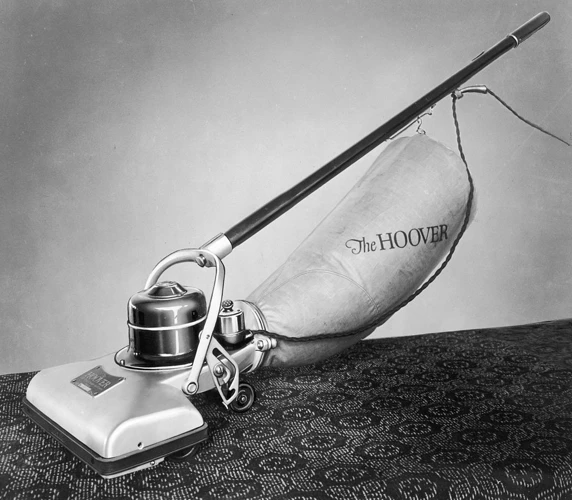
The world of vacuum cleaners went through significant advancements since the first bulky models were invented in the mid-1800s. However, it was not until the 1960s when handheld vacuums started to gain popularity. With the introduction of the Hoover Constellation, cordless models and later, lightweight, high-powered vacuums with advanced technology, modern handheld vacuums have come a long way. In this section, we’ll explore the rise of modern handheld vacuum cleaners, including their history and innovations that have made them a crucial tool in cleaning homes and cars. Are you wondering if you should go for a handheld or stick vacuum? Check out our article on handheld vs. stick vacuums to make the right decision.
The Hoover Constellation
During the 1960s, the iconic Hoover Company introduced the Hoover Constellation. This unique model looked quite different from other handheld vacuums of its time, as it was designed to float in the air. The futuristic design looked like something straight out of a science fiction movie, yet it was fully functional and became a popular cleaning tool in homes around the world.
The Hoover Constellation worked by using a small jet engine to create a cushion of air that lifted the vacuum up from the ground. It was a lightweight model that could be easily maneuvered, making it popular for those who needed to clean tight spaces or hard-to-reach areas. It quickly became a household name for its innovative design and ability to provide top-notch cleaning performance.
Although the Hoover Constellation was eventually discontinued, it left a lasting impact on the industry. Its unique design showed that there was room for innovation in the world of vacuum cleaners. This inspired other vacuum manufacturers to experiment with new designs and features.
Today, there are handheld vacuums designed for every type of cleaning job. Whether you need a vacuum for pet hair or one that’s specifically designed for cars, there’s a model out there that will fit your needs. To learn more about the benefits of handheld vacuum cleaners for cars, check out our article on the benefits of handheld vacuum cleaners for cars. And for tips and tricks on using handheld vacuums to clean hardwood floors, be sure to read our guide on handheld vacuum for hardwood tips and tricks. If you’re not sure which attachments to use with your handheld vacuum, check out our guide on how to choose handheld vacuum attachments.
Cordless Handheld Vacuums
One major development in the history of handheld vacuum cleaners was the invention of cordless handheld vacuums. These vacuums no longer require users to be tethered to a power outlet, giving them more flexibility and freedom to clean anywhere in their home or even outdoors.
The first cordless handheld vacuum was introduced by Black and Decker in 1979. However, the battery technology at the time was not advanced enough to provide a long-lasting charge, which limited the vacuum’s usefulness. As battery technology improved, other brands such as Hoover, Dyson, and Shark entered the cordless vacuum market and refined the design.
Today, cordless handheld vacuums have become popular household tools for quick cleanups and hard-to-reach spaces. Models feature a variety of battery types such as nickel-cadmium, nickel-metal hydride, and lithium-ion with varying levels of battery life.
The Dyson V11 Absolute Cordless Vacuum is one of the most popular cordless handheld vacuums on the market, earning a spot on our list of the best handheld vacuum for pet hair. It boasts a powerful digital motor and intelligent cleaning technology that adapts to different surfaces, making cleaning effortless.
The invention of cordless handheld vacuums has revolutionized the way people approach cleaning. As battery technology continues to improve, we can expect even more powerful and efficient cordless vacuums in the future.
Lightweight, High-Powered Vacuums
As consumer demand for handheld vacuums continued to grow, manufacturers began to focus on creating models that were both powerful and lightweight. These vacuums provided users with the ability to easily clean tight spaces and tackle messes on-the-go.
One major breakthrough in this area was the use of lithium-ion batteries, which allowed for longer battery life and faster charging times. This made it possible for handheld vacuums to provide more suction power without sacrificing portability.
In addition, engineers developed new motor technologies that were more energy-efficient, enabling handheld vacuums to deliver high-powered suction in a compact, lightweight package. For example, the Dyson V-series features a digital motor that spins up to 110,000 RPM, providing powerful suction that can tackle even the toughest messes.
To give consumers even more options, manufacturers began to produce corded and cordless models with varying levels of suction power. Some of the most popular models on the market today include the Shark Rocket handheld vacuum and the Bissell Multi Auto cordless vacuum.
The trend towards lightweight, high-powered handheld vacuums continues to grow, and manufacturers are constantly pushing the boundaries of what is possible in terms of suction power and portability.
Here is a table summarizing the major advancements in lightweight, high-powered handheld vacuums:
| Lithium-Ion Battery | New Motor Technologies | Corded and Cordless Models |
|---|---|---|
| Longer battery life and faster charging times. | More energy-efficient motors deliver powerful suction in a compact, lightweight package. | Provides consumers with more options for suction power and portability. |
| Enables handheld vacuums to provide more suction power without sacrificing portability. | The Dyson V-series features a digital motor that spins up to 110,000 RPM. | Popular models include the Shark Rocket handheld vacuum and the Bissell Multi Auto cordless vacuum. |
Lithium-Ion Batteries and Smart Technology
In recent years, the development of lithium-ion batteries has revolutionized the world of handheld vacuums. These powerful and efficient batteries have significantly improved the runtime and performance of these devices. With the help of these batteries, many handheld vacuums have become cordless, making them more portable and convenient for users.
The incorporation of smart technology has made these vacuums more user-friendly. Many models on the market have features such as automatic shut-off when the battery is fully charged, LED screens displaying battery life and cleaning status, and even Wi-Fi connectivity, allowing users to control the device through their smartphones.
Another major advancement in handheld vacuum technology is the addition of multifunctional attachments, including crevice tools, motorized brushes, and extension wands. These attachments help users to clean different surfaces more efficiently and effectively.
Additionally, some high-end handheld vacuums are equipped with HEPA filters that capture even the smallest particles, making them appropriate for individuals with allergies or asthma. Some models also have easily removable and washable filters, making maintenance and cleaning much more manageable.
It is clear that the incorporation of lithium-ion batteries and smart technology has improved the functionality and user experience of handheld vacuums tremendously. As technology continues to advance, we can expect to see even more innovation and improvement in the world of handheld vacuum cleaners.
Types of Handheld Vacuums Today
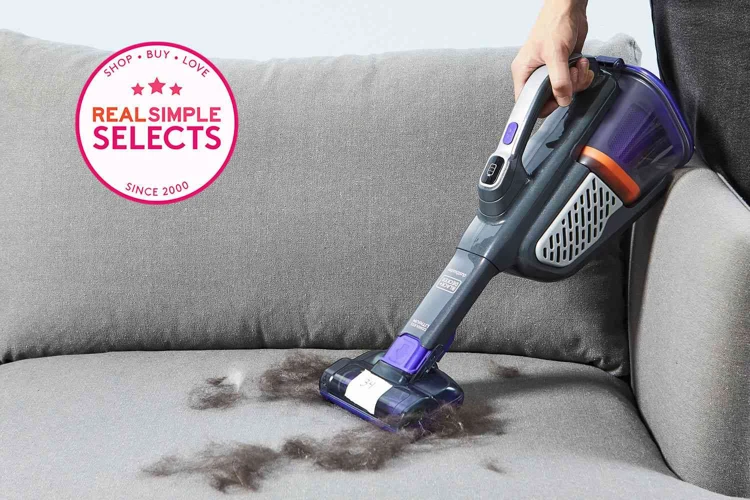
When it comes to handheld vacuums, there’s no shortage of options on the market today. From specialized pet hair vacuums to versatile 3-in-1 models, there’s a handheld vacuum for just about every need. Let’s explore the different types of handheld vacuums available today, each with their own features and benefits. Whether you need a vacuum for your car, home, or office, there’s a handheld option out there that’s sure to meet your needs.
Pet Hair Vacuums
Pet hair can be one of the most challenging things to clean up with a standard vacuum cleaner. That’s why there are specialized vacuums designed specifically for this task. Here are some key features of pet hair vacuums that make them a must-have for pet owners:
- Powerful suction: Pet hair can be deeply embedded in carpets and furniture. Pet hair vacuums typically have stronger suction power than regular vacuums to pull hair out of these surfaces.
- Specialized attachments: Pet hair vacuums often come with specific attachments for cleaning furniture and upholstery. These attachments have unique designs that help to pick up pet hair without damaging the fabric.
- HEPA filtration: Anyone with a pet knows they can produce a lot of dander and allergens. Pet hair vacuums usually include HEPA filters, which trap even the smallest particles, providing cleaner and healthier air quality in your home.
- Tangle-free brush: Pet hair can get tangled around vacuum brush rolls, which can reduce their efficiency. Pet hair vacuums often include a specialized tangle-free brush roll that removes hair around the edges without getting wrapped around the brush.
- High-capacity dustbin: When you have a pet, you need a vacuum with a large capacity to hold all the hair and debris that gets picked up. A pet hair vacuum will often have a larger dustbin to accommodate this need.
These specialized vacuums can make cleaning up after your furry friend much easier and effective. The powerful suction and specialized attachments can help you clean even the most challenging areas, leaving your home looking and smelling clean. Additionally, the HEPA filtration and tangle-free brush features make for a more pleasant cleaning experience. Invest in a pet hair vacuum to keep your home clean and free of pet hair and dander.
Car Vacuums
Car vacuums are a popular type of handheld vacuum cleaner. These vacuums are designed to clean the inside of your car, removing dirt, debris, and pet hair from the seats and floor mats. Here are some of the benefits of using a car vacuum:
- Portability: Car vacuums are small and lightweight, making them easy to take with you on the go. You can keep one in your car and use it to clean up messes as they happen.
- Powerful suction: Despite their small size, car vacuums typically have powerful suction that can easily pick up dirt and debris. They often come with specialized attachments that can help you reach tight spaces and crevices.
- Cordless convenience: Many car vacuums are cordless, so you don’t have to worry about plugging them in. Instead, they run on rechargeable batteries, which makes them convenient for quick cleanups.
- Easy to store: Car vacuums are designed to take up minimal space. Many come with a storage bag or case, which makes them easy to store in your trunk or garage.
Some car vacuums also come with unique features, such as HEPA filters that can capture allergens and bacteria, LED lights that can help you see dirt in dark areas, and wet/dry capabilities that can help you clean up spills and messes. Car vacuums are a great investment for anyone who wants to keep their car clean and tidy at all times.
Wet/Dry Handheld Vacuums
If you want a handheld vacuum that’s versatile and can handle both wet and dry messes, then a wet/dry handheld vacuum is an ideal choice. These vacuums are specially designed to handle spills, stains, and other types of messes that traditional vacuums can’t handle.
One of the best things about wet/dry handheld vacuums is their cleaning power. Most models come with powerful suction that can clean up everything from wet spills to dry debris, so you don’t have to worry about replacing your vacuum for different types of messes.
Another advantage is their portability. Since they’re designed to be handheld, wet/dry vacuums are lightweight and easy to carry around, making them perfect for quick cleanups around the house or in the car.
When it comes to choosing the right wet/dry handheld vacuum, there are a few factors to consider. First, think about the size of the vacuum and the size of the messes you’ll be cleaning up. If you’ll mainly be using it for small spills, then a smaller model may be sufficient. However, if you’ll be cleaning up larger messes, then a larger model with a larger tank may be necessary.
Below is a table comparing some of the top wet/dry handheld vacuums on the market:
| Model | Weight | Tank Capacity | Suction Power |
|---|---|---|---|
| Bissell Multi-Purpose Portable Wet/Dry Vacuum | 8.2 lbs | 6 gallons | 2.0 horsepower |
| DEWALT DCV517M1 20V MAX Cordless Wet/Dry Vacuum | 10.8 lbs | 1/2 gallon | 1.85 horsepower |
| Black+Decker 20V Max Flex Handheld Vacuum | 3.2 lbs | N/A | 24 AW suction power |
| Ryobi 18V ONE+ Cordless 3 Gal. Project Wet/Dry Vacuum | 10.15 lbs | 3 gallons | N/A |
When it comes to wet/dry handheld vacuums, there are many models to choose from, each with their own unique features and benefits. So whether you’re looking to clean up spilled liquids, tackle tough stains, or just need a portable vacuum for quick cleanups, there’s a wet/dry handheld vacuum out there that’s perfect for your needs.
Dustbuster-Style Handheld Vacuums
One of the most popular types of handheld vacuums is the dustbuster-style. These vacuums are named after the original Dustbuster, which was introduced by Black & Decker in 1979. Since then, many other companies have released their own versions of this compact and convenient vacuum.
Key Features:
- Small, lightweight design
- Cordless and rechargeable
- Easy to use with one hand
- Ideal for quick cleanups and small messes
Dustbuster-style handheld vacuums are perfect for those who are always on-the-go and need a quick and easy way to clean up spills and messes. These vacuums are designed to be used with just one hand, making them easy to maneuver and carry around the house.
One of the biggest advantages of dustbuster-style handheld vacuums is their small size and lightweight design. They are easy to store and take up minimal space, making them a great option for those who don’t have a lot of storage space or who live in small apartments.
Additionally, these vacuums are cordless and rechargeable, which means you don’t have to worry about finding a plug or tripping over a cord while you are cleaning. They usually come with a docking station or stand that you can use to charge the vacuum, ensuring that it is always ready to go when you need it.
While they may not be as powerful as their larger counterparts, dustbuster-style handheld vacuums are perfect for small messes like spilled cereal or pet hair on the couch. They are also great for cleaning out your car or vacuuming up crumbs from your desk.
Dustbuster-style handheld vacuums are a convenient and practical tool for quick cleanups and small messes. With a range of models and features to choose from, it’s easy to find one that meets your needs and fits your lifestyle.
3-in-1 Handheld Vacuums
The market for vacuum cleaners has become increasingly diverse with modern technology. One particular type that has gained popularity in recent years is the 3-in-1 handheld vacuum. This type of vacuum cleaner not only allows users to clean floors and carpets but also enables them to take care of tight spaces and upholstery.
Design and Features
A 3-in-1 handheld vacuum cleaner typically comes with three attachments: a crevice tool, a dusting brush, and an extension hose. The crevice tool helps get rid of dirt and dust in narrow and tight spaces such as between furniture or inside a car. The dusting brush is ideal for removing debris from upholstery, curtains, and lampshades. The extension hose is a useful tool for cleaning stairs and other high places.
Another feature of this type of vacuum is its portable design. Unlike traditional vacuum cleaners, which can be bulky and hard to maneuver, 3-in-1 handheld vacuums are lightweight and easy to carry around. They are also cordless, making them convenient to use in hard-to-reach areas where a power outlet might not be available.
Benefits
A 3-in-1 handheld vacuum cleaner is an ideal choice for people who live in small apartments or houses with limited storage space. Its small size makes it easy to store in a closet or on a shelf. Additionally, it is perfect for quickly cleaning up spills or messes that occur in between regular vacuuming sessions.
This vacuum is also great for pet owners, as it can quickly and easily pick up pet hair from furniture and carpets, as well as remove debris from tight spaces where pets may stay.
Limitations
While 3-in-1 handheld vacuums are versatile and convenient, they do have some limitations. One common issue is their limited battery life, which can be a problem if you need to clean a large room or multiple rooms. They may also not have as strong suction power as larger, more traditional vacuum cleaners.
Price Range
The price of 3-in-1 handheld vacuums varies depending on the brand and features offered. Some basic models can be purchased for as low as $30, while more advanced models with longer battery life and stronger suction can go up to $200 or more.
Conclusion
The 3-in-1 handheld vacuum is a handy tool for quick cleanups and spot cleaning in hard-to-reach places. Its portable design and versatile attachments make it a popular choice for pet owners and individuals with limited storage space. While these vacuums may not be as powerful as their larger counterparts, they offer a great solution for those who need a convenient and flexible cleaning solution.
The Future of Handheld Vacuums
As technology continues to evolve at an unprecedented pace, it’s exciting to imagine what the future holds for handheld vacuums. We can only speculate as to what innovative features will soon be available, but there are already some promising advancements in the works. From improved battery life to the possibility of automatic emptying and cleaning, the future of handheld vacuums is sure to bring a new level of convenience and efficiency to cleaning routines. Let’s take a closer look at what we can expect from these compact yet powerful vacuums in the years to come.
Improved Battery Life
One of the biggest challenges with handheld vacuums has always been battery life. No one wants their cleaning interrupted by a low battery warning. But with advancements in lithium-ion battery technology, today’s handheld vacuums are more powerful and have longer-lasting batteries than ever before. These improvements have revolutionized the way we clean our homes and cars.
Here are some examples of handheld vacuums with impressive battery life:
| Brand/Model | Battery Life (Max Mode) | Charge Time |
|---|---|---|
| Dyson V11 | 60 minutes | 4.5 hours |
| Shark IONWAND | 80 minutes | 3.5 hours |
| BLACK+DECKER Flex Car Vacuum | 30 minutes | 4 hours |
As you can see, most modern handheld vacuums have a battery life of at least 30 minutes, which should be enough time to clean most areas. However, if you have a larger home or need to clean your car, you may want to consider a handheld vacuum with a longer battery life.
But battery life isn’t the only thing that matters. Manufacturers are also working on improving charging times, so you can get back to cleaning faster. For example, the Shark IONWAND has a charge time of just 3.5 hours, which is much faster than some of its competitors.
The future of handheld vacuums looks bright when it comes to battery life. As lithium-ion technology continues to improve, we can expect even longer-lasting batteries and faster charging times. These advancements will make cleaning more efficient and convenient than ever before.
Automatic Emptying and Cleaning
As technology continues to advance, there is a growing demand for more convenient and hassle-free cleaning solutions. One of the most significant recent advancements in the world of handheld vacuums is the development of automatic emptying and cleaning technology. This feature allows the vacuum to automatically empty its contents into a designated bin, making the cleaning process practically effortless. Here are some of the benefits and possible future developments of this technology:
- Maximum Convenience: With automatic emptying and cleaning, users can avoid the pesky and messy task of manually emptying the vacuum’s container. This feature ensures that the vacuum is always ready to use, without having to worry about emptying and cleaning it first.
- Increased Efficiency: Vacuums with this feature can be programmed to self-clean at regular intervals, ensuring that the vacuum is always running at peak efficiency without the need for human intervention. This not only saves time but also ensures that the vacuum is removing as much dirt and debris as possible.
- Innovative Technology: Some vacuums with automatic cleaning and emptying functions also come with advanced features, such as self-charging capabilities and smart sensors that optimize performance. These features make cleaning even more effortless by allowing the vacuum to automatically dock and recharge when low on battery, and to adjust suction power based on the amount of debris detected.
- Possible Future Developments: With developing technology, it is possible that automatic emptying and cleaning functions could become even more advanced. For example, robotic vacuums with this feature might be able to navigate back to their base station and empty their contents into the garbage, without needing human intervention. Additionally, sensors might be developed that can detect the types of debris in the vacuum’s container and adjust cleaning protocols accordingly, further optimizing efficiency.
Automatic emptying and cleaning technology marks an exciting development in the evolution of handheld vacuums. As more companies integrate this technology into their models, users can enjoy even more convenient, efficient and innovative cleaning experiences.
Robotic Handheld Vacuums
Robotic handheld vacuums are the future of cleaning. The advancement in technology has led to the creation of these innovative vacuums, which operate autonomously without any human intervention. These smart vacuums use advanced sensors and mapping technology to navigate and clean your home’s floors with ease.
Here are some of the key features and benefits of robotic handheld vacuums:
- Efficient Cleaning: The advanced mapping technology of these vacuums enables them to navigate through your home, detecting and analyzing obstacles, and cleaning even the tightest corners.
- Voice Control: You can control robotic handheld vacuums by using your voice. This feature allows you to command the device through a compatible home assistant and schedule your cleaning time according to your preference.
- Schedule Cleaning: You can schedule these robotic vacuums to start cleaning at a specific time and day, making them more convenient and reliable than traditional vacuums.
- Smart Sensors: Robotic handheld vacuums have inbuilt sensors that detect corners and edges, preventing them from bumping into furniture or falling off the stairs.
- Saves Time: With a robotic vacuum, cleaning your home is as simple as pressing a button. You can enjoy more free time to do other things while the vacuum takes care of cleaning your floors.
Robotic handheld vacuums are the future of cleaning. They offer efficient cleaning, innovative technology, and time-saving benefits that make them a top choice for homeowners. With the continued advancement of technology, we can expect to see more amazing features and improvements in the smart vacuum industry in the coming years.
Conclusion
In conclusion, it is safe to say that handheld vacuums have come a long way since their inception. From the bulky and heavy first vacuums to the modern, lightweight and powerful machines, the evolution of handheld vacuums has been quite remarkable.
There have been various advancements in technology and design over the years, such as cordless vacuums and smart technology. The development of lithium-ion batteries has also played a major role in the evolution of handheld vacuums, as it has allowed them to become more powerful while still keeping their lightweight design.
Today, there are various types of handheld vacuums, each designed for specific purposes, such as pet hair vacuums, car vacuums, wet/dry vacuums, dustbuster-style vacuums, and 3-in-1 vacuums. With these different types of vacuums, consumers can choose the one that best meets their needs.
Looking to the future, it seems that the evolution of handheld vacuums is not slowing down anytime soon. Improved battery life, automatic emptying and cleaning, and even robotic handheld vacuums are just a few of the innovations we can expect in the coming years.
All in all, handheld vacuums have come a long way since their inception, and it’s exciting to think about the new technologies and designs that will be introduced in the years to come. With their convenience, portability, and powerful suction, handheld vacuums are a must-have for any modern-day cleaning arsenal.
Frequently Asked Questions
What led to the invention of the vacuum cleaner?
The introduction of carpets and the need to keep them clean led to the invention of the vacuum cleaner.
When were the first vacuum cleaners invented?
The first vacuum cleaners were invented in the early 1860s, but they were large and expensive.
Who invented the first handheld vacuum cleaner?
In 1905, a British engineer named Walter Griffiths invented the first handheld vacuum cleaner.
What was the first handheld vacuum cleaner called?
The first handheld vacuum cleaner was called the “Puffing Billy” and was powered by a gasoline engine.
When were cordless handheld vacuums invented?
Cordless handheld vacuums were first introduced in the 1980s, but they were not very powerful and had a short battery life.
What is the Hoover Constellation?
The Hoover Constellation is a unique handheld vacuum cleaner that was designed to float on a cushion of air.
What are pet hair vacuums?
Pet hair vacuums are handheld vacuums designed specifically for removing pet hair from furniture, carpets, and other surfaces.
Can you use a car vacuum in your home?
While car vacuums are designed for use in vehicles, they can also be used in the home for cleaning stairs, upholstery, and other difficult-to-reach areas.
What are wet/dry handheld vacuums?
Wet/dry handheld vacuums are designed to clean up liquid spills as well as dry debris, making them versatile cleaning tools.
What is the benefit of a 3-in-1 handheld vacuum?
A 3-in-1 handheld vacuum can be used as a stick vacuum, a handheld vacuum, and a stair vacuum, providing more cleaning options in one device.



